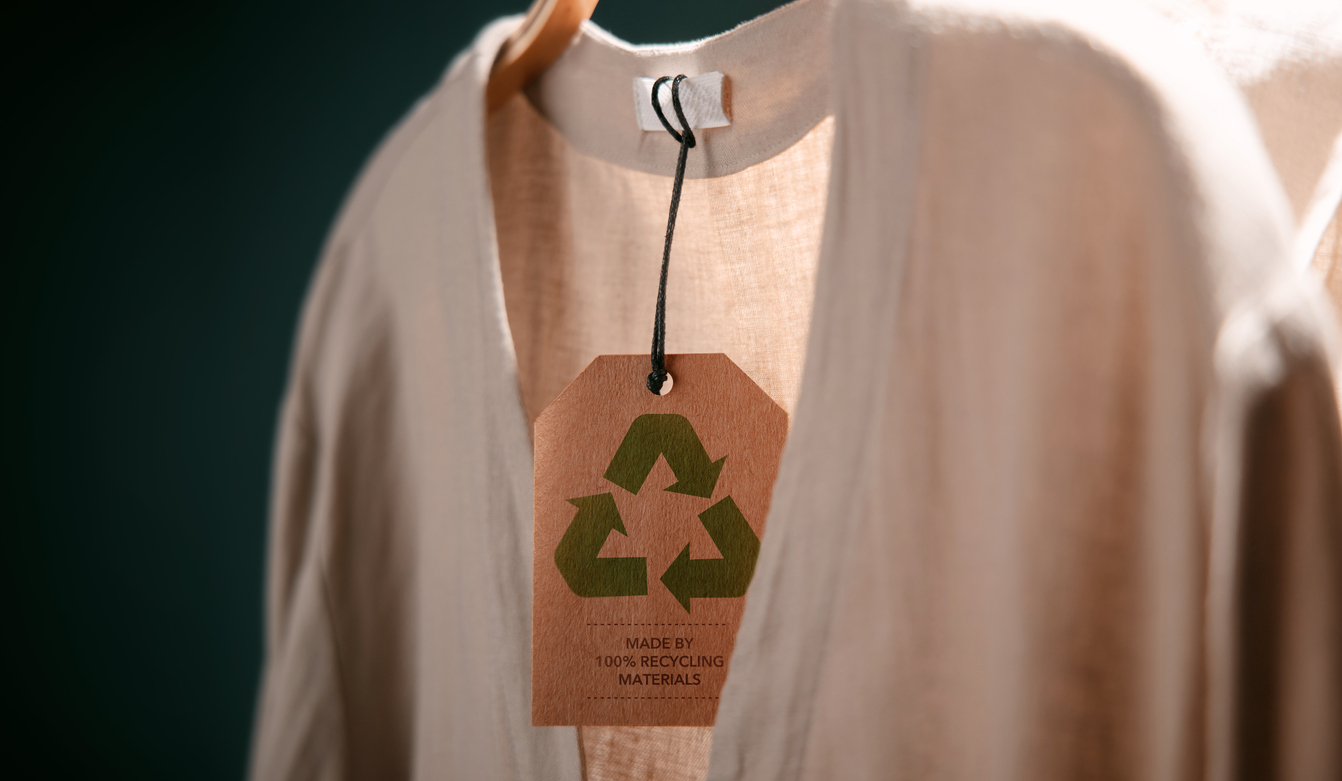Exploring the Rise of Cape Town Sustainable Fashion Brands
Exploring the Rise of Cape Town Sustainable Fashion Brands
Blog Article
Stay Ahead of the Curve by Discovering Innovative Fashion Trends
In a sector as vibrant as fashion, remaining ahead includes even more than simply adhering to current fads-- it demands an expedition of development. Smart textiles, for circumstances, are transforming garments into functional masterpieces, while 3D printing is changing layout procedures with its personalized, waste-reducing capacities. As sustainability becomes a keystone, innovations like environment-friendly products and circular fashion techniques are reshaping environmental responsibility - Cape Town Sustainable Fashion. Furthermore, the convergence of technology and fashion advertises a new age of customer interaction. How, after that, can these arising fads redefine the future of fashion, and what implications do they hold for brand names looking for to prosper in this developing landscape?

Welcoming Smart Textiles
Over the last few years, the apparel industry has experienced a transformative shift with the combination of wise textiles, an advanced advancement that mixes technology with textile. This evolution represents not just a blend of appearances and functionality but also a significant jump in the direction of sustainability and customization in style. Smart textiles, likewise understood as e-textiles, embed innovative electronic devices such as sensing units and conductive threads within the material, making it possible for garments to interact with the wearer or the environment.
These textiles are designed to monitor physiological parameters, such as heart rate or body temperature, giving real-time wellness analytics. Past health applications, smart fabrics are likewise being made use of for flexible garments, which can alter color or pattern in response to ecological stimulations, therefore using a dynamic style experience.
Moreover, the development of energy-harvesting textiles that generate power from activity or sunshine is paving the method for self-sufficient wearable modern technology. This technology is appealing to eco mindful customers and developers intending to minimize the environmental footprint of fashion. As r & d in this field development, wise textiles are anticipated to become progressively widespread, improving the landscape of modern fashion with their multifunctional abilities.
The Rise of 3D Printing
Reinventing the manufacturing landscape, 3D printing has arised as a game-changer in the garment industry. This innovative innovation has allowed designers to press the borders of imagination, generating elaborate and personalized garments that were formerly inconceivable. By leveraging electronic layout and additive production, 3D printing helps with the development of complex geometries and patterns, allowing designers to experiment with brand-new textures and structures.
A remarkable advantage of 3D printing in fashion is its capacity to produce on-demand, minimizing waste and minimizing stock demands. This efficiency not just enhances manufacturing processes but also permits quick prototyping, enabling designers to bring their visions to life in a shorter timeframe. Additionally, 3D printing sustains customization to a degree unparalleled by conventional techniques, using one-of-a-kind designs and tailored fits tailored to individual customer preferences.
The increase of 3D printing has additionally democratized style, making it obtainable to arising developers that can currently produce top notch items without substantial monetary investment in standard production facilities. As innovation proceeds to breakthrough, the fashion sector is positioned to harness the complete potential of 3D printing, exploring brand-new products and techniques that will certainly redefine just how style is conceived and generated.
Sustainable Fashion Innovations
As the apparel industry grapples with the pushing need for ecological duty, lasting fashion technologies have actually emerged at the forefront of transformative adjustment. The growing awareness of ecological effect has actually fueled a shift in the direction of more eco-conscious methods and materials. Developers and brand names are now link prioritizing sustainability, integrating techniques that minimize waste and lower carbon impacts.
One significant development is the surge of round style, which stresses recycling and upcycling to prolong the lifecycle of garments. This approach not just decreases waste but additionally urges customers to embrace a much more conscious strategy to garments intake. Furthermore, the usage of sustainable materials, such as organic cotton, hemp, and recycled polyester, has actually acquired grip. These materials need less water and power during production, dramatically minimizing ecological influence.
An additional advancement depends on the adoption of ingenious dyeing strategies that utilize waterless processes or natural dyes, consequently minimizing the substantial amounts of water and chemicals generally made use of in fabric dyeing. In addition, advancements in biotechnology have resulted in the creation of lab-grown leather and materials, offering environmentally friendly and cruelty-free choices to conventional materials. With these introducing initiatives, the apparel industry is making purposeful strides in the direction of an extra lasting future.

Tech-Integrated Clothing
Tech-integrated apparel stands for a groundbreaking blend of style and innovation, reshaping exactly how individuals connect with their garments. This ingenious domain is noted by the addition of smart fabrics and embedded electronic parts, improving both performance and visual allure. From health and fitness trackers embedded in sportswear to heated coats managed via smartphone apps, tech-integrated clothing offers customers unmatched comfort and flexibility.
Pioneering brands are driving this fad, concentrating on developing garments that reply to environmental stimulations or customer commands. As an example, some garments can alter color or pattern in feedback to temperature level changes, while others integrate biometric sensing units to keep track of health metrics like heart rate or stress degrees. The seamless integration of modern technology into textiles likewise prolongs to environmental sustainability, with efforts to create self-cleaning textiles or garments that change to weather conditions, thus lessening the requirement for multiple layers.
In addition, the arrival of wearable modern technology is not just restricted to clothing but encompasses accessories like watches and eyewear, more broadening the scope of tech-integrated fashion. As the sector proceeds to innovate, the possibility for personalization and personalization in garments grows, offering consumers unique, tech-enhanced fashion experiences that accommodate their individual requirements and preferences.
Future of Virtual Style
In recent times, the future of virtual fashion has actually emerged as a transformative force within the market, leveraging improvements in digital technology to redefine exactly how fashion is developed, experienced, and eaten. By integrating increased fact (AR), virtual fact (VR), and 3D design tools, designers can now craft interactive and immersive experiences that transcend typical style boundaries. Online style permits for the creation of garments that exist exclusively in electronic settings, offering limitless opportunities for technology without the limitations of physical production.
This digital change not only offers possibilities for imaginative expression yet likewise addresses sustainability worries fundamental in standard fashion methods. Cape Town Sustainable Fashion. By removing the demand for physical resources, virtual style reduces waste and minimizes carbon impacts. In addition, the increase of virtual fashion aligns with the increasing customer demand for unique and personalized experiences, as virtual garments can be tailored and customized to private choices with ease

Verdict
The garment industry's try here future lies in the integration of lasting methods and cutting-edge innovations - Cape Town Sustainable Fashion. Smart textiles and tech-integrated garments are boosting functionality, while 3D printing supplies article chances for personalization and waste reduction. Lasting fashion, via environmentally friendly products and circular approaches, shows a dedication to environmental stewardship. Furthermore, virtual fashion is positioned to redefine customer interactions. Adjusting to these trends is essential for brands looking for to remain affordable and appropriate in this quickly advancing landscape.
In recent years, the fashion sector has actually witnessed a transformative shift with the combination of clever fabrics, a sophisticated innovation that blends innovation with material.As the fashion industry grapples with the pressing need for environmental obligation, lasting fashion developments have emerged at the forefront of transformative adjustment.In current years, the future of digital style has actually arised as a transformative pressure within the market, leveraging improvements in electronic innovation to redefine exactly how style is produced, experienced, and consumed. The rise of digital style straightens with the raising customer need for individualized and special experiences, as online garments can be personalized and customized to specific choices with convenience.
The fashion market's future lies in the integration of innovative technologies and lasting techniques.
Report this page